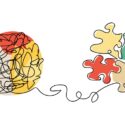
Changing the way you see things can make all the difference says Lindsay Taylor
The person with the most flexibility in thinking and behaviour has the most influence on any interaction.
Sometimes it is difficult to understand another person’s behaviour or attitude in a particular situation. We don’t understand the responses we get and therefore become frustrated and lose sight of our original outcome. How good would it be to gain an understanding into why someone elicits a particular behaviour that to us may seem defensive, negative, destructive or inappropriate.
The technique known as “perceptual positions” can allow you to gain insight into a situation by looking at it from three different perspectives.
1. First Position (your own)
by fully experiencing what is important to you. This is known as being “associated” into your experience.
2. Second Position (the other person’s)
by you being fully associated with what is important to them.
3. Third Position (from the outside)
by you taking a disassociated and analytical view of what is happening between 1 and 2.
By gaining this insight we give ourselves choices and flexibility about the actions we can take in order to support our outcomes.
The Technique
From first position and “in your own shoes”
think about the situation from your point of view. What is important to me? How does this affect me? What is my desired outcome from this situation? Take a mental note of these.
From second position and stepping into “the other person’s shoes”
think about what is important to them. See, hear and feel the world from their position. Take on the other person’s physiology and think about their beliefs and values to become fully associated into their world.
From third position and like “a fly on the wall”
you move to the position of an independent eye witness. You observe and comment on the facts of the situation without feeling or emotion. You can therefore give yourself disassociated advice on what would be useful in order to improve the situation and gain a better understanding of what is going on.
A good way to work with this technique is to physically move between positions to experience the different perspectives. Position two chairs – sit on one to experience first position then move to the other chair to experience second position. Stand back to experience third position from a distance.
Recognise what may happen if a person becomes stuck in any of the three positions. A person stuck in first position can become selfish and egotistical. In second position the person can be over-influenced and co-dependent on the views of those around them, in third position a person can become emotionally detached and unfeeling.
Whether physically moving between positions or, in real-time situations, moving positions in your mind, you will find this technique beneficial to increase your awareness and flexibility during a given situation.”













